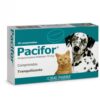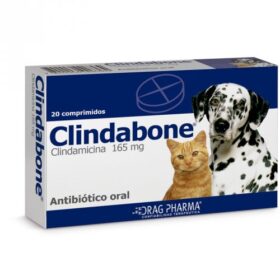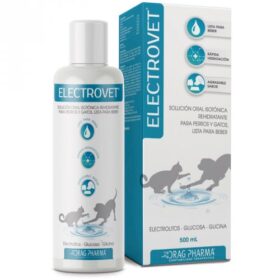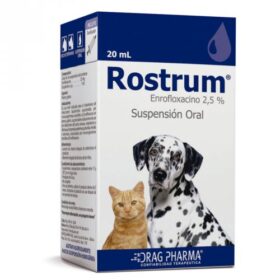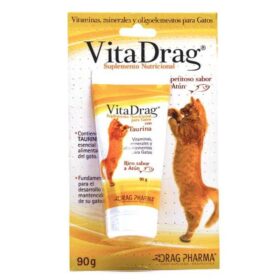- Your cart is empty
- Continue Shopping
Product Description
SPECIES
Dogs
DOSAGE FORM
Injectable solution
THERAPEUTIC ACTION
Sedative – Pre-anesthetic
COMPOSITION
Each 1 mL of solution for injection contains:
Accepromazine Maleate …………………. 10 mg
(Equivalent to 7.4 mg of acepromazine base)
Excipients q.s.p …………………………. 1 mL
INDICATIONS
Pacifor® Solution for Injection, is indicated as a sedative and pre anesthetic agent.
ROUTE OD ADMINISTRATION AND DOSAGE
Administration routes:
Intramuscular, intravenous or subcutaneous.
Dose: 0.14 – 0.27 mL per 10 kilos of body weight in a single dose, equivalent to 0.1 – 0.2 mg of acepromazine base per kilo of body weight, in a single dose. Do not exceed 3 mg total dose.
After parenteral administration, animals should be kept in a quiet place until the onset of sedative effects that occur around 15 minutes. The effects can last up to 3 hours. Endovenous administration should be slow. Administer aseptically.
DRUG INTERACTIONS
- Accepromazine may exacerbate the action of central nervous system depressants if used together.
- Concomitant administration with Epinephrine can lead to beta activity causing vasodilation and increased heart rate.
- Opioids can improve the hypotensive effects of Accepromazine.
- Accepromazine should not be administered within one month of deworming with organophosphate agents as its effects may be potentiated.
- Phenytoin metabolism may decrease if given simultaneously with phenothiazines.
- Procaine activity can be enhanced by phenothiazines.
- Co-administration of Acepromazine and Propanolol can lead to serum elevation of both drugs.
- Co-administration of Quinidine with phenothiazines can cause additive cardiac depression.
- Vasocontrictors like Phenylephrine antagonize the hypotensive effects of phenothiazines.
CONTRAINDICATIONS
- Do not administer intra-arterially.
- Do not administer to animals with hypovolemia or shock.
- Do not administer to animals with coagulopathies or thrombocytopenia.
- Do not administer to animals with tetanus or strychnine poisoning.
- Do not administer within one month of deworming with Organophosphate agents.
SPECIAL PRECAUTIONS FOR THE OPERATOR
- In the case of ocular exposure, the eyes should be irrigated with plenty of water. If irritation exists and persists, the patient should be evaluated by a doctor.
- In the case of dermal exposure, contaminated clothing should be removed or the exposed area washed thoroughly with water. If irritation exists and it persists, the patient should be evaluated by a doctor.
- In case of accidental ingestion, the mouth should be washed. If there was large intake, immediate medical attention should be requested.
- In the case of accidental injection, immediate medical attention should be requested.
WARNINGS
Special warnings and precautions for use:
- Endovenous administration should be done slowly.
- After the administration of Accepromazine, lower doses of general anesthetics are required.
- Use with caution in regional anesthetic procedures with local anesthetics.
- Use with caution and with the lowest recommended dose in animals with liver dysfunction, heart disease and general weakness.
- Use with caution in very young or weakened animals.
- Use with caution in geriatric patients.
- Accepromazine has no analgesic effects, measures should be taken to control pain.
- Use with caution in brachycephalic dogs (Boxer, Pekingese, etc.), in dogs with MDR1 mutations (Collies, Australian Shepherds, among others) and in giant breeds, Greyhounds and Terriers.
- Use cautiously as a containment agent in aggressive dogs.
- It can be used in conjunction with Atropine to block its bradycardial effects.
- It is recommended to use eye lubricants or artificial tears as corneal protectors.
- A higher dose does not accelerate the onset of sedation, it only lengthens the sedative effect.
- Once it has been administered, it is important to leave the animal in a quiet place for around 15 minutes or until the sedative effects are achieved.
- After administration, patients should not be exposed to extreme temperature fluctuations for at least 8 hours.
- Co-administration with other respiratory or central nervous system depressants may exacerbate respiratory depression.
- Keep out of the reach of children.
ADVERSE EFFECTS
Unwanted effects and adverse reactions:
- Accepromazine generates vasodilation-mediated hypotension, which can last for a few hours. It is usually mild in healthy animals, however, it can be accentuated in anesthetized, weakened or hypovolemic patients.
- Unusual cardiovascular collapse of varying severity (secondary to bradycardia and hypotension) has been described, especially in brachycephalic breeds.
- Accepromazine causes significant intraoperative hypothermia that lasts for a few hours.
- Accepromazine causes prolapse of the nictitating membrane, which lasts for a few hours.
- Accepromazine may transiently decrease hematocrit, reestablishing itself after several hours, which may be of importance in anemic animals.
- Accepromazine transiently decreases platelet aggregation without affecting clotting times.
- Occasionally Accepromazine can generate contradictory clinical signs of aggressiveness and generalized stimulation of the Central Nervous System. These reactions are infrequent and transient in nature and generally do not last for more than 48 hours.
- Intramuscular injections of Acepromazine can cause transient pain at the injection site.
OBSERVATIONS
Special precautions for the disposal of unused product or waste material:
Discard the unused product in its original container.
Dispose of empty containers of this product along with household waste.
Contact the manufacturing company or companies specialized in waste disposal, to receive recommendations on the disposal of expired or unused products.
CONSERVATION
Store at a temperature between 15 and 30 ° C, away from light. Once the container is opened, use within 3 months and it must be stored at a temperature between 15 and 30ºC, sheltered from light.
PRESENTATION
Ampoule bottle with 10 mL and 50 mL


